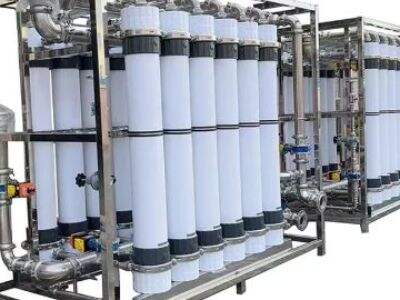Cleaning liquids by removing unwanted molecules and particles is a very important area of nanofiltration membranes. These membranes are super small and contain even smaller holes that let only certain things through. This unique design allows them to catch larger particles while allowing the smaller ones to pass through. This makes them very effective at purifying liquids by filtering out undesirable substances like dissolved salts and pollutants, rendering the water far safer for use.
Nanofiltration Membrane Types
Nanofiltration is a membrane separation process, and various nanofiltration membranes are available, each with its own unique properties and applications. For example, a company called Vocee Membrane offers a range of these membranes that are used for various applications for water purification. Some of the main ones you'll hear about the most often are ceramic membranes, polymeric membranes, and hybrid membranes.
These membranes are constructed from a variety of rigid materials such as alumina, silicon carbide, and zirconia. These materials make ceramic membranes strong and capable of withstanding tough conditions, such as high temperatures and aggressive chemicals. However, although they are quite durable, they can cost quite a bit and are less flexible than other membrane types.
In contrast, polymeric membranes are composed of synthetic materials—polyamide, polyethersulfone, polystyrene, etc. So-called "foul-resistant" membranes, again, can continue to function effectively, even when they are rejecting challenging particles. Moreover, they are cheaper than ceramic membranes. But the NF System are not as heat and chemical resistant as ceramic membranes and tend to have a shorter lifespan.
Hybrid membranes merge the beneficial properties of both ceramic and polymeric membranes. Hydrophilic supports with high permeation properties could be combined with various hydrophobic gases and organic vapors to produce hybrid membranes that are thermally and chemically stable and cost-efficient. This sets them as a popular option for applications.
Nanofiltration Membranes Clean Water
Nanofiltration membranes have a variety of applications in water purification; they are commonly used to produce water for drinking and other applications. They effectively help to take out various harmful substances and toxins from water, useful for keeping water clean and safe. The Vocee Membrane provides many options for various tasks, from drinking water treatment over desalination.
Drinking water treatment is removal of germs, bacteria and hazardous chemicals from the water to be consumed by humans. This happens when higher energy is needed to separate impurities from water, such as nitrate ions at penalty——Nanofiltration Osmosis membranes are excellent in this area, affording high impurity rejection without affecting taste and smell of water.
Nanofiltration membranes are also used in wastewater treatment. This involves cleaning dirty water by taking out contaminants such as heavy metals and organics. Nanofiltration membranes are capable of removing these harmful substances from wastewater, allowing for the discharge of treated water back into the environment or its reuse in other Ultrapure Water Systems, making it a crucial technology for preserving water resources.
Desalination removes salt from seawater, turning it into fresh water. This is a very necessary process, especially in places that have little fresh water to work with. Nanofiltration membranes can reject dissolved salts such as sodium and chloride ions from the seawater while rendering the chloride and sodium ions harmless to consumable water, industrial water, and well water.

